Skip to content
Comparison of FFT Performance in Mainstream Oscilloscopes
FFT, as a simple frequency spectrum testing tool, has become a standard feature in oscilloscopes. EEVBlog conducted a comparison of the FFT capabilities of mainstream oscilloscopes, selecting several common models to show their performance. Of course, the evaluation method is somewhat subjective, primarily relying on visual observation. We have summarized this part of the video content for everyone to reference.
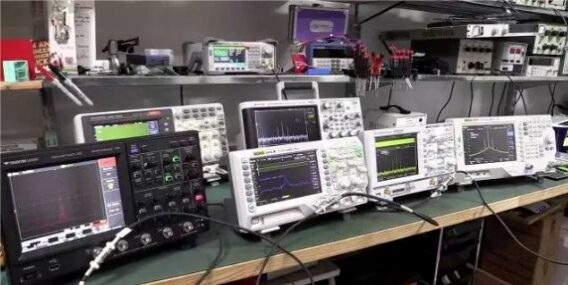 First is the group photo
First is the group photo
From the left, there are LeCroy WaveJet Touch 354, GW Instek GDS 1104B, Rigol DS1054Z, Keysight 3054T, R&S HMO 1202, and there is also a Tektronix MDO 3000 that is not shown in this picture.
All oscilloscopes are connected to the same Dingyang SDG2122X signal generator output. It is set to FM modulation, with a carrier frequency of 1MHz, modulation frequency of 5KHz, and frequency offset of 500Hz.

There is also a spectrum analyzer, Rigol’s DSA815, for comparison. The frequency spectrum of the FM modulated signal is shown below, using this waveform as a reference.
Results displayed by the Rigol DSA815 spectrum analyzer
All oscilloscopes use an 8-bit ADC, theoretically providing an SNR of about 50dB. FFT and window functions are very mature algorithms, so the results should be relatively similar.
Rohde & Schwarz HMO 1202, 128K-point FFT results
First, we have the Rohde & Schwarz HMO 1202, which can perform FFT calculations up to 128K points.
The HMO has a significant advantage in that it allows users to set the FFT point count individually. The more points in the FFT, the better the frequency resolution, but increasing the point count also increases the computational load, which can reduce speed. So adjusting the point count allows users to choose conveniently.
Moreover, being a professional RF instrument company, the HMO is the only oscilloscope that allows direct adjustment of the center frequency and span via knobs on the front panel. There is no need to manually input values, making it very convenient for observing the spectrum with FFT.
GW Instek GDS 1104B, 1M FFT results
The FFT of GW Instek’s GDS 1104B is fixed at 1M points, significantly higher than the maximum points of the Rohde & Schwarz, but the refresh speed is almost as fast as that of the HMO 1202. In FFT calculations, increasing the point count also improves frequency resolution, which can reduce background noise and achieve higher processing gain. However, from the image, aside from a sharper peak at the carrier frequency, it feels quite similar to the HMO 1202. Additionally, the tester complained about the user interface, which is not very user-friendly. UI is indeed a weakness of domestic instruments.
Keysight 3054T, 64K FFT results
Keysight allows the complete closure of time-domain waveforms, displaying only the FFT results, making the interface look cleaner. The point count for FFT is fixed at 64K, and the refresh speed is also very fast. Due to the use of a touchscreen, it is also very convenient when setting the span and center frequency. There’s nothing to critique, it’s very good.
FFT results of Rigol DS1054Z
The test showed that the FFT performance of Rigol DS1054Z was quite poor, with too few points resulting in low frequency resolution, only showing a rough bulge in the image above.
However, in fact, the EEVBlog test was not accurate; the default FFT of the DS1054Z calculates based on the data points on the screen, which is very few. But the new version of the firmware allows FFT calculations using memory data, significantly increasing the point count. It looks like the results would be much better, with clear peaks visible on both sides.
FFT results of DS1054Z after firmware update
Of course, there are worse cases. It is said that LeCroy was one of the first manufacturers to incorporate FFT functionality into digital oscilloscopes. However, this time, the WaveJet Touch 354 did not perform well.
LeCroy WaveJet Touch 354, 8K FFT results
In fact, this can be understood; the LeCroy oscilloscope is not manufactured by itself, but is an OEM of Japan’s IWATSU’s DS-5654. Compared to other first-tier brands of similar specifications, the price of the WaveJet is only about half. Another interesting point is that, unlike other manufacturers who are secretive about their OEM status, LeCroy openly prints the IWATSU logo on the back cover.
Like Keysight, it allows the waveform display to be turned off and only shows the FFT results. However, the 8000-point FFT calculation results are quite disappointing (not just because of the number of points).
Another interesting aspect is that among the provided window functions, there is an option for VonHann, which is presumably meant to refer to the Hanning window, though it is unclear why this name was used.
Many people have discussed this issue, and some say that the inventor of the Hanning window was named Julius von Hann, which is why Von Hann is considered the original name. In fact, “Von” is a prefix for noble surnames, essentially meaning “of”, so this usage is a bit strange.
In short, the FFT results are not ideal.
Finally, the last test is on Tektronix MDO 3000. The MDO has a separate spectrum analyzer channel (in addition to the four probe interfaces on the front panel, there is also an independent N-type connector), which, although it also uses FFT for calculations, has independent hardware support, and the FFT point count reaches 2M points, allowing for very fine spectral peaks and low noise floor.
Frequency spectrum display results of Tektronix MDO 3000 RF channel
To make a fairer comparison of the FFT computing capabilities of the oscilloscopes themselves, we abandoned the use of the RF channel of the MDO 3000 and, like the other oscilloscopes, used the BNC port to input the signal, while also enabling the FFT function in the mathematical operations, resulting in very good results.
FFT results of Tektronix MDO 3000
While the FFT point count is unknown, the spectral lines are very fine, suggesting a high point count is likely used. However, the downside is that the refresh speed is too slow, taking about 20 seconds to refresh.
Source: Electronic Exchange
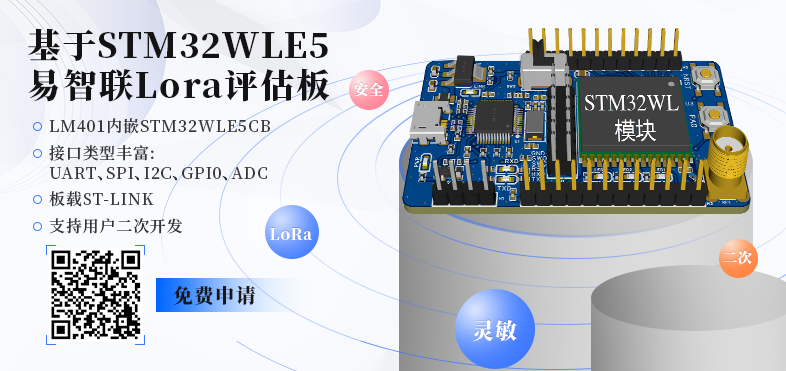
 First is the group photo
First is the group photo
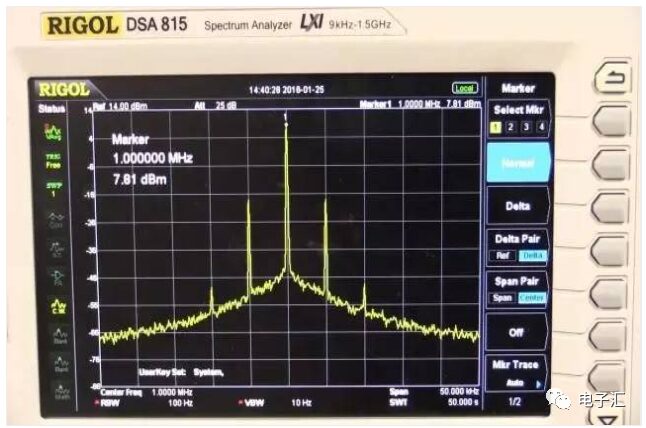
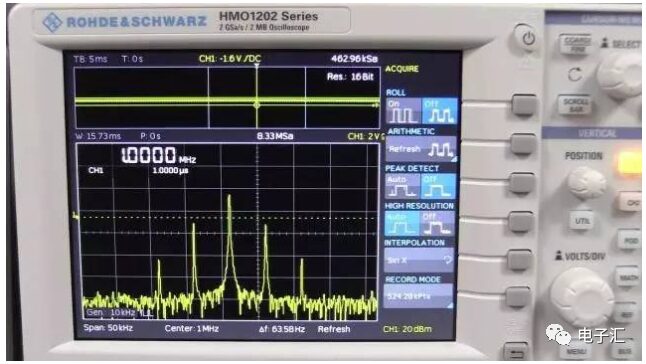
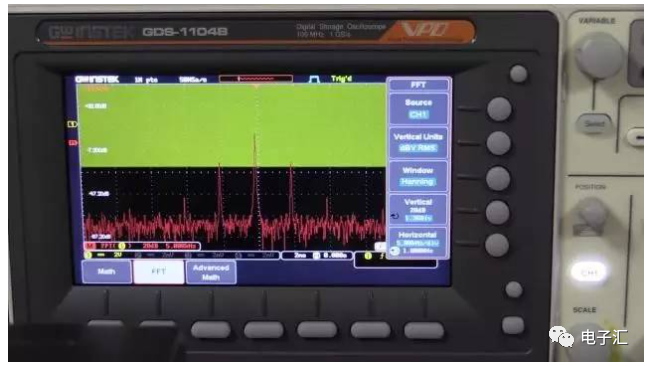

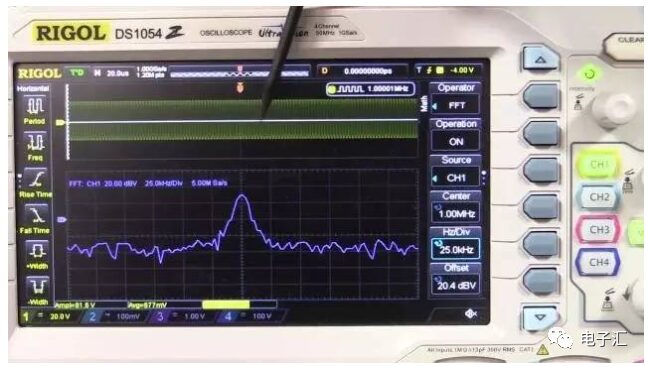
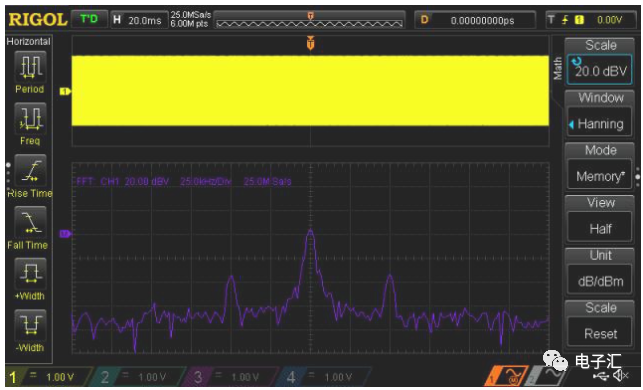
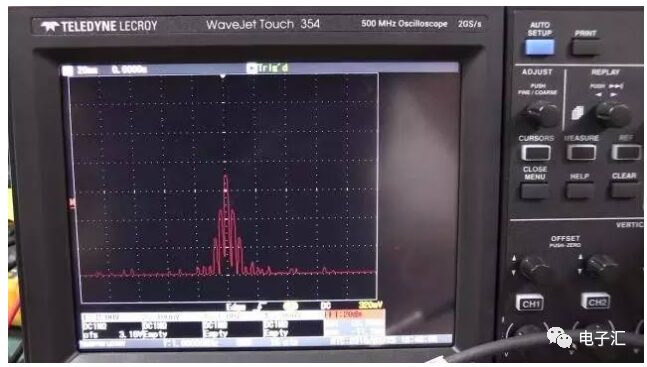

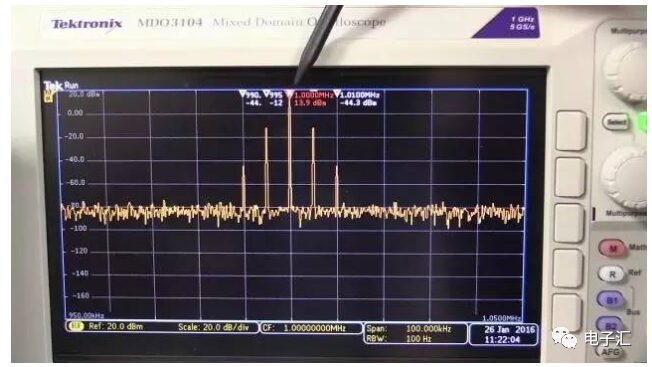
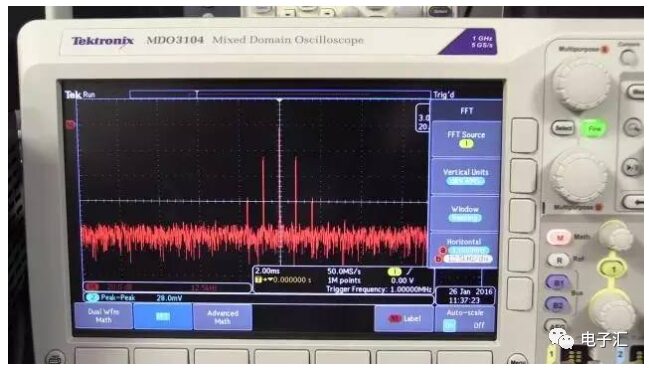

 First is the group photo
First is the group photo









